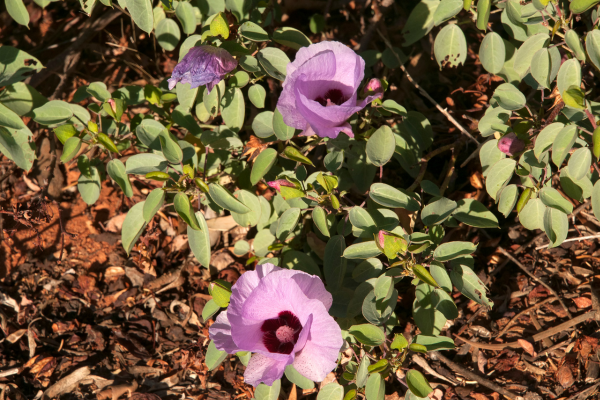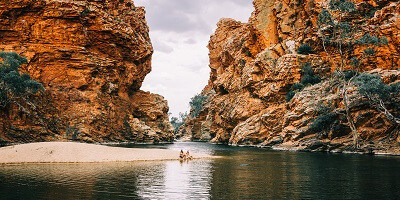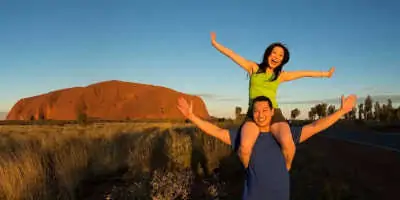
5 Australian desert plants to find in Uluru
Written by: Cameron Ward
Published: 12/27/2023
Reading time: 3 mins
The surrounding areas of Uluru have very important plants that have helped the Traditional Owners to survive for thousands of years.
Uluru Kata Tjuta National Park has a large selection of plants, over 400 if we’re counting! There are a couple of rare species that are in the national park.
Some of these plants have helped the Anangu people, who are the Traditional Owners, to survive as the plants can be used as food, medicine, and tools.
1. Honey grevillea
Honey grevillea can grow up to two metres long and is native to Queensland! During spring and winter, the plant grows yellow and green flowers that look like long spikes. These flowers contain nectar so there are often birds that sit on the plant to eat the nectar.
Anangu children often will suck the nectar from the flowers for a nice treat. The Anangu people also soak the flowers in water to make a sweet drink, similar to cordial.
2. Mulga
Mulga is one of Australia’s most popular trees and is found throughout inland Australia. You won’t miss seeing these 5 to 12-metre-high trees in Uluru that are grey/green in colour. Mulgas also produces yellow flowers that almost look like spikes.
Anangu people will roast and grind the seeds into a paste and they also can eat the gum on the trees.
3. Striped mintbush
As you can guess from the name, striped mintbush does smell minty from its leaves. The plant has gorgeous white flowers with purple stripes on the inside.
The striped mintbush is often found on rocky outcrops, creek lines, and slopes. You can see these two-metre-high plants along the Walpa Gorge walk.
These plants are used to help relieve any cold and flu systems and can dry out sores. Who would’ve thought a plant could do so much for us!
4. Sturt’s desert rose
The Sturt’s desert rose is the Northern Territory’s official floral emblem that can be seen on the flag. The rose is a beautiful mauve to pink colour with a dark red centre. You can find these plants around dry creek beds or rocky slopes.
5. Blue mallee
The blue mallee grows up to three metres high and best survives in sandy regions. The blue mallee has rounded blue/green leaves with collections of creamy white flowers that also create gum nuts. The top of the tree has cream-coloured smooth bark, while the trunk has rough bark.
An interesting fact about the blue mallee is even after a fire, the underground root will resprout and create many new trunks.
Anangu people will take the gum nuts the blue mallee makes and dry them out, so it releases seeds. They will then ground these seeds into a nutty flavour paste. The trees can have the water extracted from the roots during the driest times.











